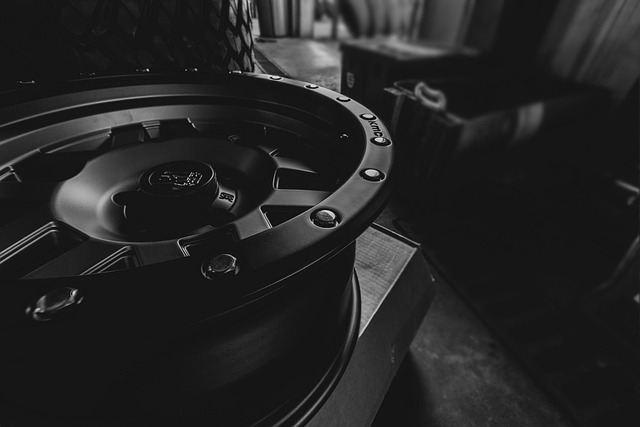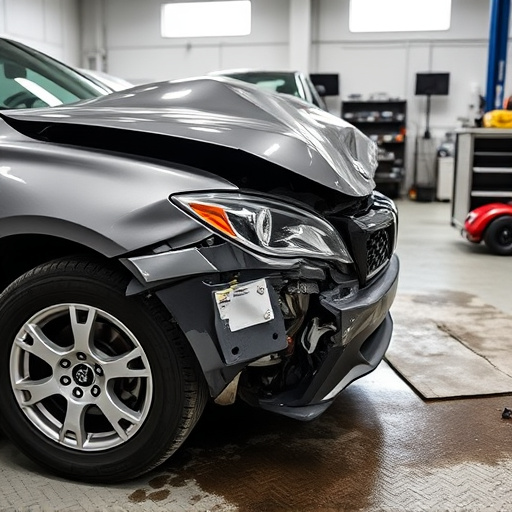Backorders of auto body shop parts (a common issue due to manufacturing disruptions, rapid tech advancements, and complex modern vehicles) slow service efficiency, increase costs, and prolong repair times. To combat this, shops and customers should enhance communication, track orders digitally, engage reliable suppliers, explore alternative sources, maintain stocked spare parts, or adopt just-in-time inventory management. Efficiently managing the supply chain for auto body shop parts is crucial for reducing backorders, delays, and expanding service offerings like car restoration packages; ultimately enhancing customer satisfaction and business growth.
In today’s fast-paced world, no one enjoys waiting. When it comes to auto body repair, delays caused by backordered parts can be particularly frustrating for both customers and mechanics. This article explores the complex issue of backordered auto body shop parts, delving into their causes and significant impact on service times. We offer practical strategies for navigating these delays and provide insights on enhancing efficiency within the auto body parts supply chain to ensure smoother operations.
- Understanding Backordered Auto Body Shop Parts: Causes and Impact
- Navigating Delays: Strategies for Efficient Auto Body Repair
- Enhancing Efficiency: Streamlining Auto Body Parts Supply Chain
Understanding Backordered Auto Body Shop Parts: Causes and Impact

Backordered auto body shop parts are a common issue that can significantly impact the efficiency and turnaround time of auto body services. These delays occur when essential components required for repairs or restorations are unavailable from manufacturers or distributors, leading to prolonged wait times for both customers and auto body shops. Understanding the causes behind these backorders is crucial in mitigating their effects.
Several factors contribute to backordered auto body shop parts. Manufacturing disruptions due to supply chain issues, natural disasters, or global events can cause shortages. Additionally, rapid technological advancements often result in older part models becoming obsolete, making it challenging for shops to source compatible replacements. Furthermore, the complexity of modern vehicles means that specialized and unique parts are needed, increasing the likelihood of delays as these parts may not be readily available in inventory or from suppliers. This situation can lead to increased costs, customer dissatisfaction, and longer durations for auto body painting and dent removal processes.
Navigating Delays: Strategies for Efficient Auto Body Repair

Navigating delays caused by backordered auto body shop parts can significantly impact the efficiency and timeliness of auto body repair services. To streamline this process, customers should communicate openly with their chosen auto body shops about expected part arrival times and potential lead times for replacement parts. Utilizing digital communication platforms can help in tracking orders and receiving updates on part availability, enabling proactive scheduling by both the shop and the customer.
Additionally, choosing reputable suppliers known for reliable inventory management and fast delivery can mitigate delays. For complex or specialized auto body shop parts, exploring alternative sources, such as aftermarket or salvage yards, could provide faster solutions. Investing in a well-stocked spare parts inventory or adopting just-in-time stock management strategies also helps auto body shops minimize backorders and ensures that car bodywork, auto dent repair, and auto body restoration services are completed without undue postponements.
Enhancing Efficiency: Streamlining Auto Body Parts Supply Chain

In today’s competitive automotive industry, enhancing efficiency within the auto body shop parts supply chain is more crucial than ever. Streamlining the process can significantly reduce delays caused by backorders, ensuring faster turnaround times for essential components like paintless dent repair tools and auto glass repair kits. By implementing robust inventory management systems, auto body shops can predict demand, minimize excess stock, and maintain optimal levels of critical parts, thereby avoiding backorders altogether.
This improved efficiency doesn’t just mean quicker repairs; it also opens doors to offering a wider range of services, including car restoration packages. A well-organized supply chain allows for better accessibility to high-quality parts, enabling shops to take on more complex projects and meet the diverse needs of their customers. Ultimately, enhancing efficiency in auto body parts procurement is a game-changer that contributes to both customer satisfaction and business growth.
Backorders in the auto body parts supply chain can significantly delay repairs, impacting both shops and customers. By understanding common causes like manufacturing backlogs and logistics issues, shops can implement strategic solutions to mitigate these delays. Streamlining the supply chain through efficient inventory management and alternative sourcing is key to ensuring timely service, enhancing customer satisfaction, and maintaining competitive edge in the auto repair industry.













